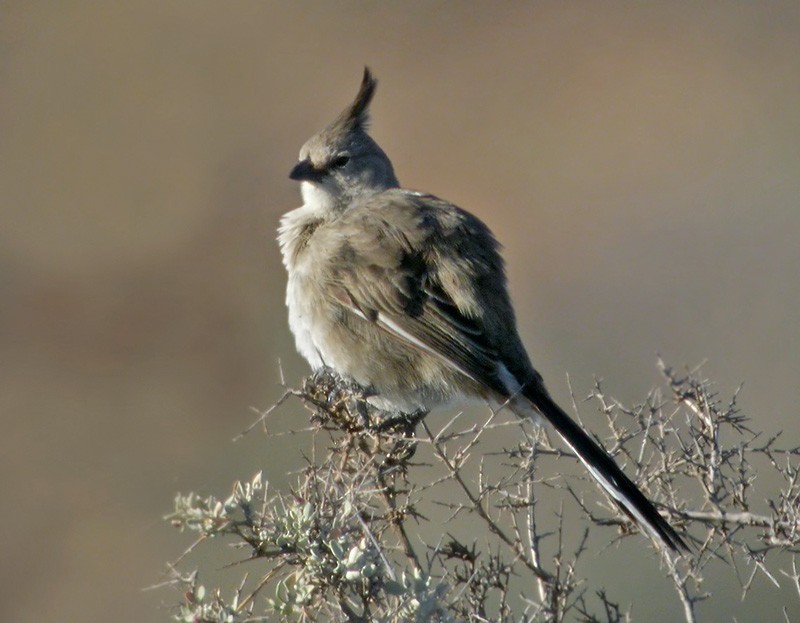Chirruping Wedgebill
A species of Australian Whipbirds and Wedgebills Scientific name : Psophodes cristatus Genus : Australian Whipbirds and Wedgebills
Chirruping Wedgebill, A species of Australian Whipbirds and Wedgebills
Botanical name: Psophodes cristatus
Genus: Australian Whipbirds and Wedgebills
Content
Description General Info
 Photo By Lars Petersson
Photo By Lars Petersson Description
The chirruping wedgebill is a medium-sized bird, measuring approximately 18–21 cm and weighing 31-64 g. Its bill is dark and wedge-shaped when mature, and horn-coloured when immature. It possesses a slim upright crest, and long rounded tail. Adult plumage consists of pale brown upperparts, with white/pale grey underparts. Flight feathers are edged with white, and the tail is coloured dark black-brown with a white tip. Immature individuals possess similar plumage, the only key differences being buff-tipped flight feathers, unlike the white tips of the mature individual. This bird is often misidentified as the chiming wedgebill (Psophodes occidentalis). Key identifying features include the faint breast streaking, slightly longer tail, and repetitive chirruping call. 
Size
20 cm
Nest Placement
Ground
Feeding Habits
Chirruping Wedgebill primarily forages for seeds and insects, displaying unique feeding behaviors and dietary adaptations suited to its environment.
Habitat
The chirruping Wedgebill is typically found in arid to semi-arid shrublands, favoring regions dominated by low, dense vegetation. Common plant associations within its habitat include chenopod shrubs, like bluebush, various acacia species, emu-bush, as well as canegrass near swamps and watercourses. This species thrives in environments that provide ample cover and foraging opportunities.
Dite type
Insectivorous
General Info
Feeding Habits
Bird food type
Distribution Area
The chirruping wedgebill is found throughout south-eastern inland Australia, inhabiting low, open shrublands with acacia species. Distribution is patchy, but where found, the species is usually locally abundant. Though the species covers a large area, it is rarely found in the southern part of its range. It tends to favour areas with vegetation of bluebush, acacia stands, emu bush and lignum species. 
Species Status
The chirruping wedgebill is classified as Least Concern by the IUCN. 

 Photo By Lars Petersson
Photo By Lars Petersson Scientific Classification
Phylum
Chordates Class
Birds Order
Perching birds Family
Whipbirds and wedgebills Species
Chirruping Wedgebill